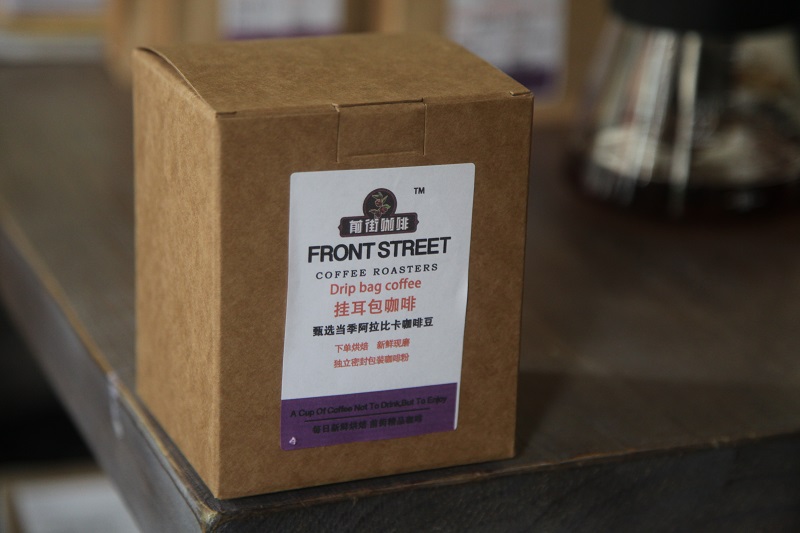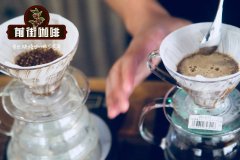Brazil Yellow Bourbon Coffee Dou se Tao Manor Sertãozinhojieshao_ Brazil Yellow Bourbon Cafe

Professional coffee knowledge exchange more coffee bean information please follow the coffee workshop (Wechat official account cafe_style)
The Brazilian manor Sertaozinho yellow bourbon coffee natural sun 16 + is from the manor Sert ã ozinho, located in the Minas Gerais state of Minas Tiris, Brazil. The estate has 300 hectares of protected forest and towering old growing trees called Jequitib á Rosa (Cariniana legalis), which is 40 Michael and is estimated to be 1500. The management of the estate Sert ã ozinho has been passed to Jose. Renato Berg Zelna Goncalves Dias, who has been putting all his enthusiasm back to his grandparents, who were the first immigrants to grow coffee in Brazil. As a trained agronomist, Jose and his passion and academic knowledge focus on creating a diverse environment full of microbes and beneficial insects to support healthy coffee crops. Jose's enthusiasm to ensure quality is reflected in Manor Sert ã ozinho's state-of-the-art processing facilities with certified quality management from the International Organization for Standardization (ISO). His enthusiasm goes beyond coffee to ensure that the people of the estate Sert ã ozinho benefit from on-site housing, health care and schools from their work throughout the year.
Coffee tour of the estate Sert ã ozinho.
After more than 67 years of coffee production, Manor Sert ã ozinho holds all stages of the coffee process, farming until it is ready. Orth has been specializing in the coffee market since 2005, focusing on all stages of the food chain because of plant harvesting, selection, toasting, packaging and distribution of cafes.
King Jequitib á
When we arrived at the farm, our first stop was pink, with 1500 Jequitib á and 40 Michael. This Jequitib á is the symbol of the estate Sert ã ozinho and is considered to be the guardian of the crops.
The energy of this place is indescribable. Sitting there, facing Jequitib á, feeling all your power and connection with nature is an incredible experience. I feel refreshed and energetic.
Coffee plantation.
Coffee shrubs can be seen on the coffee plantation, looking forward to harvest, which is done by hand. They do not do mechanical harvesting because the ground is very uneven and the entrance of the machine is not allowed. In addition, manual harvesting ensures better results. Coffee shrubs are right next to each other, and it's even hard to pass between them.
Whenever I go to a coffee shop, I want to harvest a ripe grain and prove it. It's a treat, sweetheart.
Fazenda sert ã ozinho in the side of the photo, we can see the ripening stage of the coffee beans. Big green is born and gets red until you reach maturity and pass from the point.
Ripe grain (bright red) is the purpose of collection, because I have touched the sweet spot of maturity. In this way, your cherries will be picked, peeled, and will go through the process of drying in the sun.
The darkest (black) is called a pass because it is beyond maturity. It looks like a raisin, and the longer it stays on its feet, the more wrinkles and dryness it will become. This is because your body is naturally dry, even on foot. Grains are sweet after this natural drying process because all the sugar in the pulp enters the grain, resulting in sweet drinks and lower acidity.
Coffee beans are not wasted. Depending on the maturity of the coffee, he will receive different destinations, but everything is dug up. However, only perfect and ripe grains are used in caf é s in Orth, and the rest are sold.
Dry and deal with the paddock.
After lunch, we went to the yard, where we dried and processed coffee. The farm was too big, so we followed the van down. In the photo below, you can see the terrace where the coffee beans are dry. They stay there until they reach the ideal percentage of humidity (about 11%). Make the dryness occur evenly, and they move many times a day.
Fazenda Sert ã ozinho
Everything on the farm is the first world. It is super clean, organized and modern. Nice to meet you.
Cupping.
I also met with the finance office and the cupping room. Both won a cupping apron and participated. This is super interesting. We tasted four different samples of coffee. Finally, unless corrected, it is green and the coffee is quite bad.
Fazenda Sert ã ozinho
Roasting.
They were baking coffee when we went in. The aroma is amazing. Orpheum has roasted and ground coffee, beans and capsules. On the farm Sert ã ozinho, all these processes take place in the same building.
The grinding was done shortly after baking. In the case of coffee beans, check the roasting by hand. Coffee on the treadmill, women will only find grains found by pin ç ando.
This building is also a machine for making coffee boxes. Her work is completely steam, and we can follow this process from production to packaging your capsules. Coffee is fresh on the ground and goes directly to the capsule, which is individually packaged out of the machine. An official said that this process has not been deleted and discarded non-standard. Then place them manually in the box.
Feeling all the aroma of coffee, it is inevitable that we take more coffee and roast it right there.
END
Important Notice :
前街咖啡 FrontStreet Coffee has moved to new addredd:
FrontStreet Coffee Address: 315,Donghua East Road,GuangZhou
Tel:020 38364473
- Prev

Salvadoran coffee AIDA bourbon sun-dried boutique coffee beans recommended _ El Salvador pearl
Professional coffee knowledge exchange more coffee bean information Please follow Coffee Workshop (Wechat official account cafe_style) is the sixth generation of Salvadoran bourbon coffee. Aida founded Aida Battle Selection (ABS) Aida in 2009 to spend her childhood and youth in the United States, but returned to El Salvador at the age of 28. She wasn't a coffee maker at first, but in
- Next

Commercial bourbon coffee beans in Arabica, Brazil _ coffee beans in Minas Matas, Brazil
Professional coffee knowledge exchange more coffee bean information please follow coffee workshop (Wechat official account cafe_style) Brazil is a rich and beautiful land, is the world's largest coffee producer, known as the coffee country, most of the traditional Brazilian coffee is dried through the natural method the syrup remains in the raw beans, so it has a sweet taste. Processed in this way
Related
- Detailed explanation of Jadeite planting Land in Panamanian Jadeite Manor introduction to the grading system of Jadeite competitive bidding, Red bid, Green bid and Rose Summer
- Story of Coffee planting in Brenka region of Costa Rica Stonehenge Manor anaerobic heavy honey treatment of flavor mouth
- What's on the barrel of Blue Mountain Coffee beans?
- Can American coffee also pull flowers? How to use hot American style to pull out a good-looking pattern?
- Can you make a cold extract with coffee beans? What is the right proportion for cold-extracted coffee formula?
- Indonesian PWN Gold Mandrine Coffee Origin Features Flavor How to Chong? Mandolin coffee is American.
- A brief introduction to the flavor characteristics of Brazilian yellow bourbon coffee beans
- What is the effect of different water quality on the flavor of cold-extracted coffee? What kind of water is best for brewing coffee?
- Why do you think of Rose Summer whenever you mention Panamanian coffee?
- Introduction to the characteristics of authentic blue mountain coffee bean producing areas? What is the CIB Coffee Authority in Jamaica?

